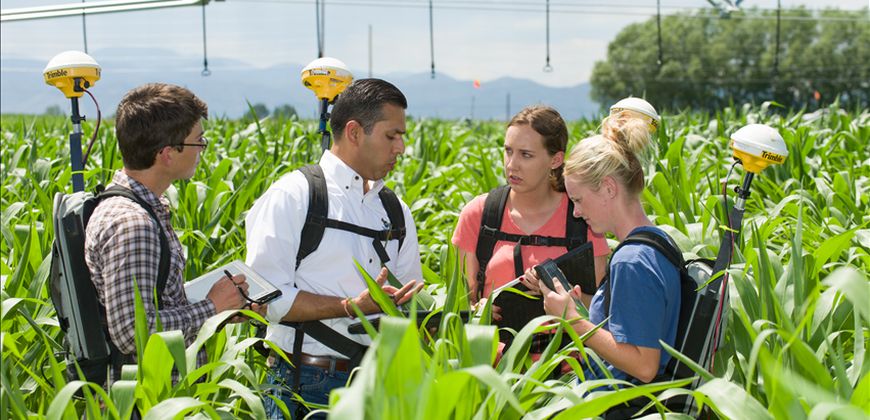
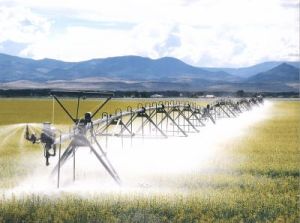 Colorado has long embraced agriculture as central to its economy and innovation as an essential driver of its economic growth. According to a new study from Colorado State University, the pace of innovation in agriculture and several closely related industries—like water management, animal health and food manufacturing—is picking up in Colorado.
Colorado has long embraced agriculture as central to its economy and innovation as an essential driver of its economic growth. According to a new study from Colorado State University, the pace of innovation in agriculture and several closely related industries—like water management, animal health and food manufacturing—is picking up in Colorado.
New study: Front Range at the forefront of innovation
A new study, “The Emergence of an Innovation Cluster in the Agricultural Value Chain along Colorado’s Front Range,” identifies trends in innovation as well as factors that position Colorado’s Front Range for the emergence and growth of an innovation-led industry cluster in the agriculture and food system.
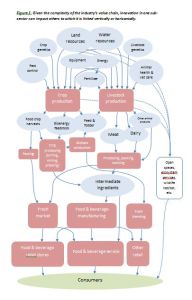
“Innovators in an increasingly integrated agriculture-water-food-beverage-bioenergy innovation ecosystem are gathering and growing along Colorado’s Front Range, creating next-generation technologies and business models to nourish, refresh and energize the world,” says Gregory Graff, lead author of the study and associate professor of Agricultural and Resource Economics at CSU.
“As the industry’s value chain becomes increasingly complex, it is more important for innovators to coordinate with their suppliers and buyers when introducing new technologies or products,” Graff explains. “Geographic co-location, or ‘clustering,’ enables them to coordinate more effectively. The Front Range is proving an ideal region for this dynamic to take off.”
According to Kathay Rennels, co-author on the study and CSU’s associate vice president for engagement, “Innovation provides many opportunities for Colorado agriculture and industry. It creates new opportunities for investment. It opens up opportunities for new kinds of jobs for our younger generation. We have such a fertile region in which to cultivate innovation as the ‘new crop’ for Colorado agriculture.”
Who is innovating in agriculture?
The study looks at who is innovating in agriculture and food-related industries within Colorado by examining where scientific publications and U.S. patents originate within the state. This provides a cross-se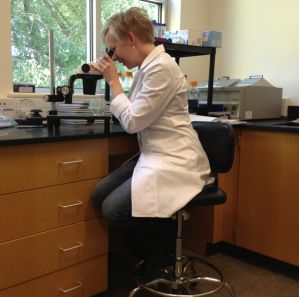 ctional view of Colorado’s evolving science base as well as its output of technological innovations.
ctional view of Colorado’s evolving science base as well as its output of technological innovations.
Between 1990 and 2012, Colorado authors generated 14,913 scientific publications in the fields of science that encompass the industry’s value chain (including agriculture, agronomy, horticulture, plant sciences, water, soil sciences, entomology, veterinary health and food science.) Publication rates have grown steadily at 3.25 percent per year over the past two decades, and are among the highest in the nation, relative to the size of the state’s economy.
During the same years, Colorado inventors received 2,455 U.S. patents in these fields of technology, growing at an average rate of 6.5 percent per year. A mapping of Colorado scientific publications and inventions shows that more than 90 percent of them came from the Front Range.
Colorado’s R & D activities
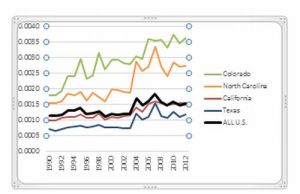
Based on the analysis of R&D activities and locations, the study found:
- Colorado’s R&D in agriculture and food is highly concentrated geographically within the relatively compact urban corridor of metro Denver and the northern Front Range.
- Colorado’s R&D activities in agriculture and food have been growing two to four times faster than the state’s economy overall.
- Colorado’s private-sector R&D in agricultural and food technologies has doubled relative to the state’s growing public-sector science base in these fields.
The study identifies several fundamental economic, geographic and demographic factors likely to be responsible for the emergence of this innovation cluster along the Front Range. Some of those include the co-location of major academic and federal research institutions, the area having one of the highest regional concentrations of publicly funded agricultural R&D in the nation, and the close proximity between major production agriculture and a major urban corridor.
Innovative companies and organizations
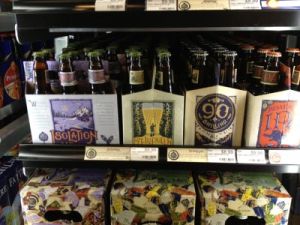 A significant portion of the study is devoted to looking at the companies and organizations in Colorado and in which sectors they are innovating. Nearly a dozen categories are identified as being particularly strong in Colorado, including: water technology; soil fertility; plant genetics; animal health and nutrition; agricultural information systems; sensors and testing for biosafety; bioenergy; commodity processing and food manufacturing; dairy production; beer, wine and spirits (particularly craft producers); natural, organic and local foods; and “fast and fresh” restaurant chains.
A significant portion of the study is devoted to looking at the companies and organizations in Colorado and in which sectors they are innovating. Nearly a dozen categories are identified as being particularly strong in Colorado, including: water technology; soil fertility; plant genetics; animal health and nutrition; agricultural information systems; sensors and testing for biosafety; bioenergy; commodity processing and food manufacturing; dairy production; beer, wine and spirits (particularly craft producers); natural, organic and local foods; and “fast and fresh” restaurant chains.
Copy of the study
A full copy of the study can be found at http://outreach.colostate.edu/econ-dev/cluster.html.
Ag Innovation Summit in March
Building on the innovation strengths identified in the study, CSU will host a summit on “Advancing the Agriculture Economy through Innovation” on the CSU campus March 19-20. The event will bring together a diverse network of industry leaders, investors and policymakers who have a historical understanding of agriculture in Colorado and a 21st century dedication to using innovation to mobilize human and financial resources. For more information on the summit, visit www.csuaginnovationsummit.com.
NWSS Partners Breakfast
The authors will also present the study at The National Western Partners Breakfast on Jan. 17. The breakfast is an opportunity to highlight the importance of agricultural innovation within the state’s economy to CSU corporate partners and Denver’s leadership, and to showcase the long history and evolving affiliation between CSU and the National Western Stock Show.